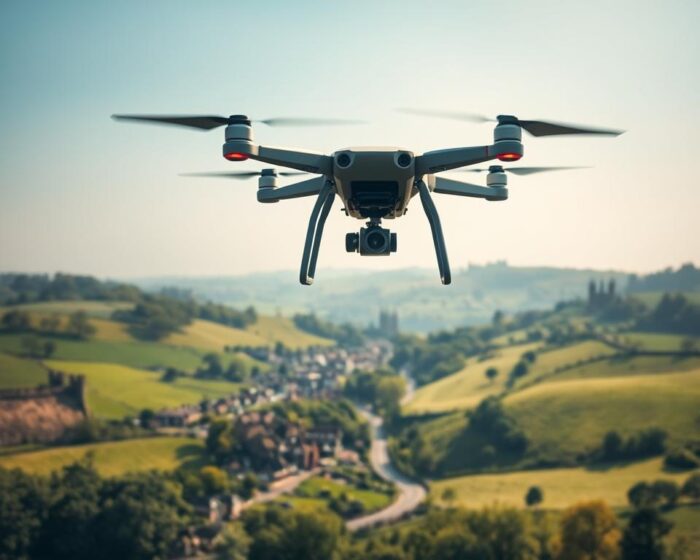
How Drone Video Production is Transforming UK Filmmaking
Did you know that over 40% of major UK film productions now use drones to save money? They replace traditional helicopter shots, cutting costs by up to 70%. This change isn’t just about saving money—it’s changing how we tell stories. Drones are now key for capturing stunning visuals that were once thought impossible.
Imagine a camera flying over the Scottish Highlands or moving through London’s busy streets. All this can be done without cranes or big planes. Drone video production is a game-changer for UK filmmakers, giving them unmatched flexibility. These drones carry 4K cameras, stabilisation systems, and live feeds, making the sky a canvas for creativity.
Major studios and indie filmmakers are both using this technology. It’s driven by innovation and practicality. From BBC nature series to viral social media clips, drones are making a big impact. They’re not just tools—they’re sparking a new era of storytelling. As rules change and tech gets better, the UK’s skies are becoming a hub for creative filmmaking.
Key Takeaways
- Drone video production cuts costs while boosting creativity in film and advertising.
- Over 85% of UK production companies report improved access to previously unreachable filming locations.
- New camera tech on drones now matches or exceeds the quality of traditional aerial filming methods.
- Regulatory changes in 2024 streamlined permits, encouraging wider adoption across industries.
- Documentaries and commercials are leading the charge in integrating drones for immersive visuals.
The Rise of Aerial Filming in the UK
Aerial filming has grown a lot in the UK, changing how we see stories. Drones now capture views that were once only possible with expensive helicopters. The Civil Aviation Authority (CAA) has made rules clearer, helping this growth while keeping everyone safe.
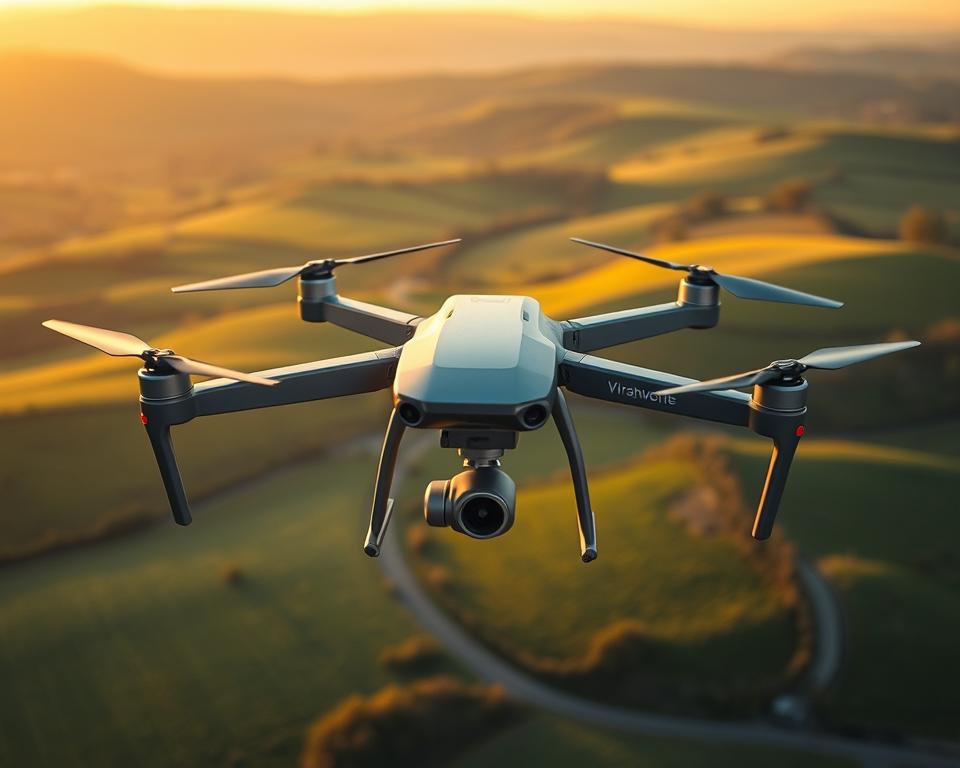
Evolution of Drone Technology
Old drones had short battery life and poor quality. Now, drones like the DJI Mavic 3 and Autel EVO Nano+ have 5.7K cameras and can avoid obstacles. They are light but powerful, fitting into smaller budgets. Courses from Drone Videography Mastery teach users how to use them safely and effectively.
Impact on Cinematic Storytelling
Stories are now more exciting than ever. Aerial filming lets filmmakers show off amazing views or follow animals without disturbing them. For example, *The Peak*, a 2023 BBC documentary, used drones to follow Arctic tern migrations without harming their habitats.
“Drones democratize access to perspectives that once required million-pound budgets.” – CAA Technical Advisory Panel, 2023
This change helps creators make stories that feel new and real. Whether for ads or dramas, it opens up new ways to tell stories.
Exploring Drone Video Production Techniques
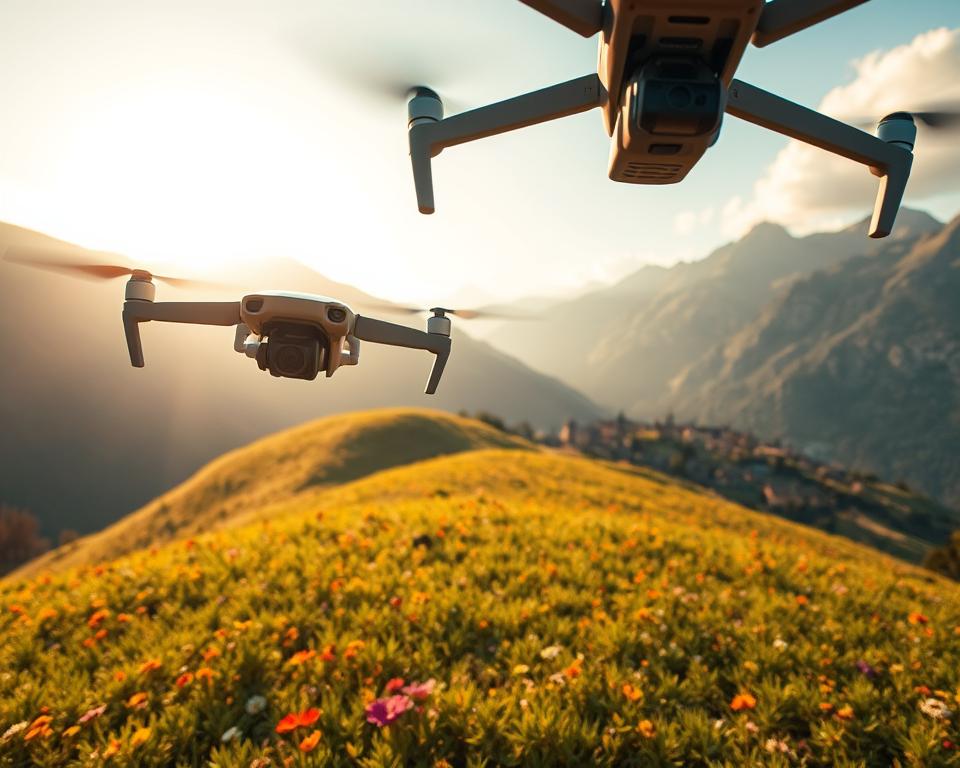
Mastering uav cinematography is about mixing technical skills with creative ideas. Whether it’s capturing a sunrise in the Lake District or following a race car in the Cotswolds, the right methods can turn simple footage into stunning visuals.
Benefits of UAV Cinematography
- Aerial accessibility: Reach cliffs, city skylines, or remote landscapes without ground restrictions.
- Dynamic movement: Smooth 360° camera rotations and precise altitude adjustments create visually striking sequences.
- Cost efficiency: Reduces need for expensive cranes or helicopters while maintaining professional results.
Integrating High-Quality Drone Footage
Optimising uav cinematography involves:
- Gimbal precision: Use 3-axis gimbals like DJI’s Ronin series to eliminate shake during high-speed manoeuvres.
- Shot composition: Frame shots using the rule of thirds—positioning subjects off-centre enhances visual balance.
- Post-production: Apply colour grading in DaVinci Resolve to match aerial footage with ground-level scenes.
| Scenario | Camera Settings | Example Use |
|---|---|---|
| Low-light shoots | ISO 800, 1/120 shutter | Twilight shots of London’s skyline |
| Action sequences | 1080p/120fps | Racing drones at Goodwood Festival of Speed |
| Landscape timelapses | 4K resolution, 2-second intervals | Seasonal changes over the Yorkshire Moors |
“The best UAV cinematography disappears into the story—viewers forget it’s a drone and just feel the scene.” – Emily Carter, BAFTA-nominated aerial director
Technological Advancements in Drone Filming
Modern drone tech is changing how we film. Now, professional drone services use tools that mix precision with creativity. This means sharper shots and smoother flying.
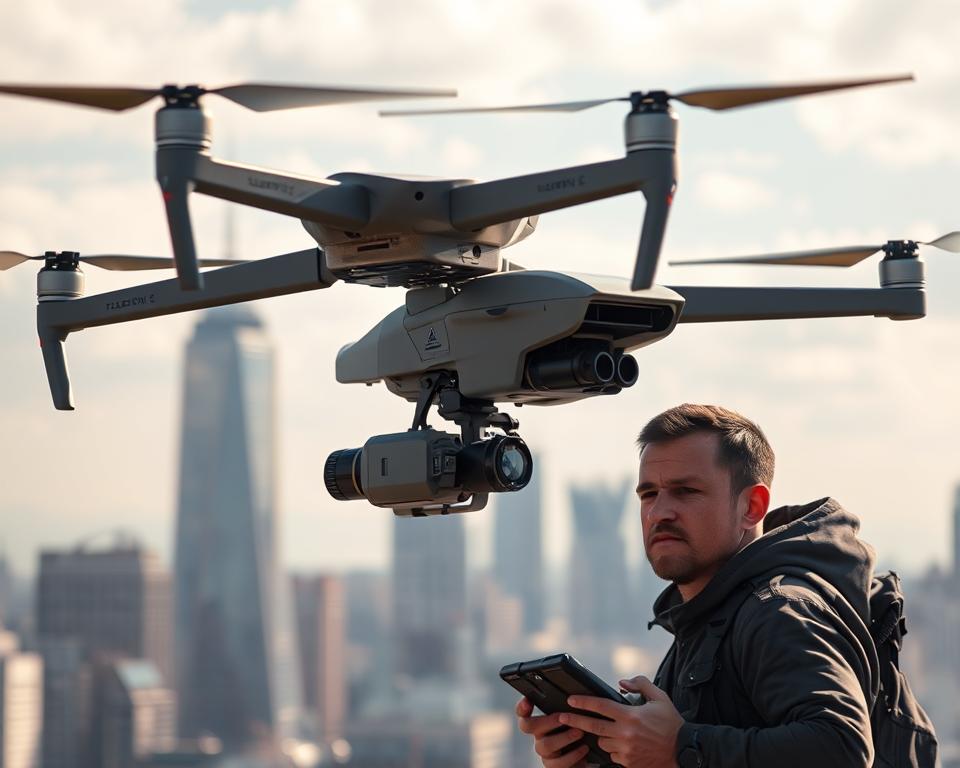
Cutting-Edge UAV Features
Latest drones, like the DJI Inspire 3, bring new features. These include:
- 8K cameras for ultra-high-resolution footage
- Real-time obstacle avoidance systems
- GPS locking for stable flight paths
Innovations in Drone Videography
AI and cloud editing are changing how we work. Drones now come with:
- 4K HDR imaging for vibrant colour grading
- Longer battery life for extended shoots
- Wireless live feeds for on-set previews
These updates help professional drone services make dynamic content. They meet safety and quality standards. The mix of hardware and software makes every aerial shot cinematic.
Professional Drone Services for UK Productions
Professional drone services in the UK make it easy for production teams to get high-quality drone footage. They follow strict aviation rules. This means every flight is safe and legal.
These experts know all about the Civil Aviation Authority (CAA) rules. They make sure every flight is okay. This lets filmmakers be creative without worrying about rules.
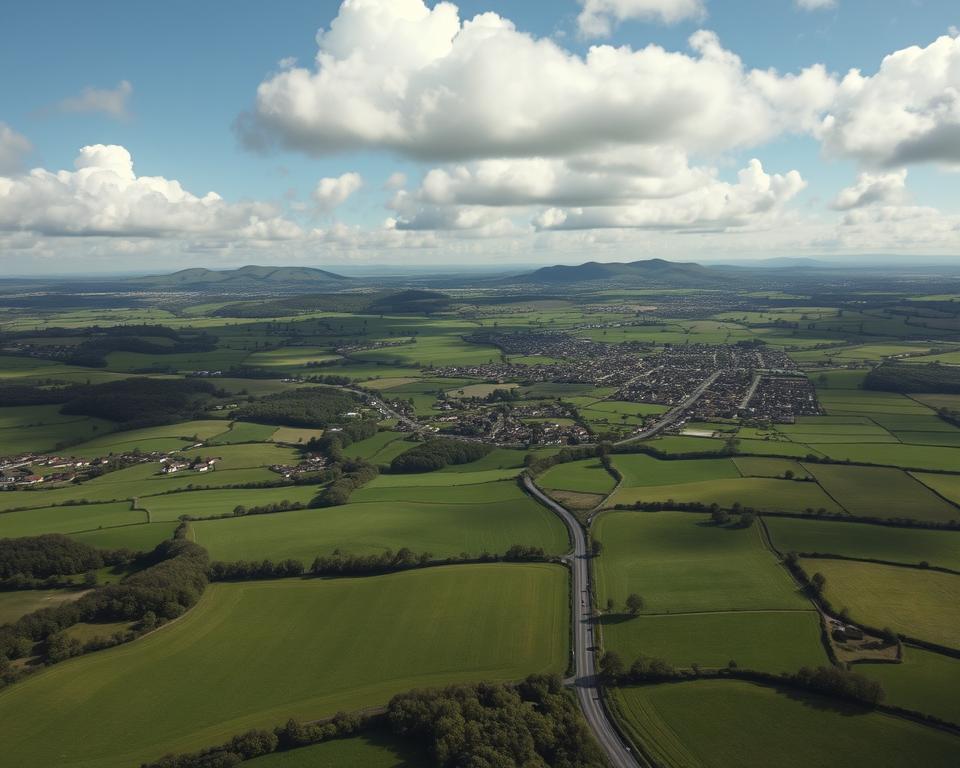
| Aspect | Traditional Methods | Drone Filming |
|---|---|---|
| Cost | High due to crews and equipment | Lower overhead with portable tech |
| Setup Time | Hours for cranes/gimbals | Minutes for deployment |
| Resolution | Dependent on fixed setups | 4K+ with dynamic angles |
More and more production companies are choosing drone services. A 2023 CAA report shows 78% of UK film projects with certified operators avoid legal trouble. The benefits are clear:
- Rapid approval for flight permits
- Access to top-notch stabilisation and camera tech
- Cost-effective for any project size
Local studios team up with these services to improve their work without losing quality. For example, BBC Studios used drones for Blue Planet II and saved 40% on location time. This partnership helps the economy, like in Cornwall, known for its drone-friendly filming.
When picking a provider, check if they follow CAA Part 113 rules. This ensures both legal and creative success.
Enhancing Filmmaking with Drone Video Production
Drone videography is changing how we tell stories in the UK. It lets filmmakers capture scenes that were once impossible. Drones give us new views, turning simple shots into stunning films.
This technology is more than just a tool. It’s a creative leap forward. Directors use drones to show off city views, follow moving subjects, or tell environmental stories. This adds depth and emotion to their films.
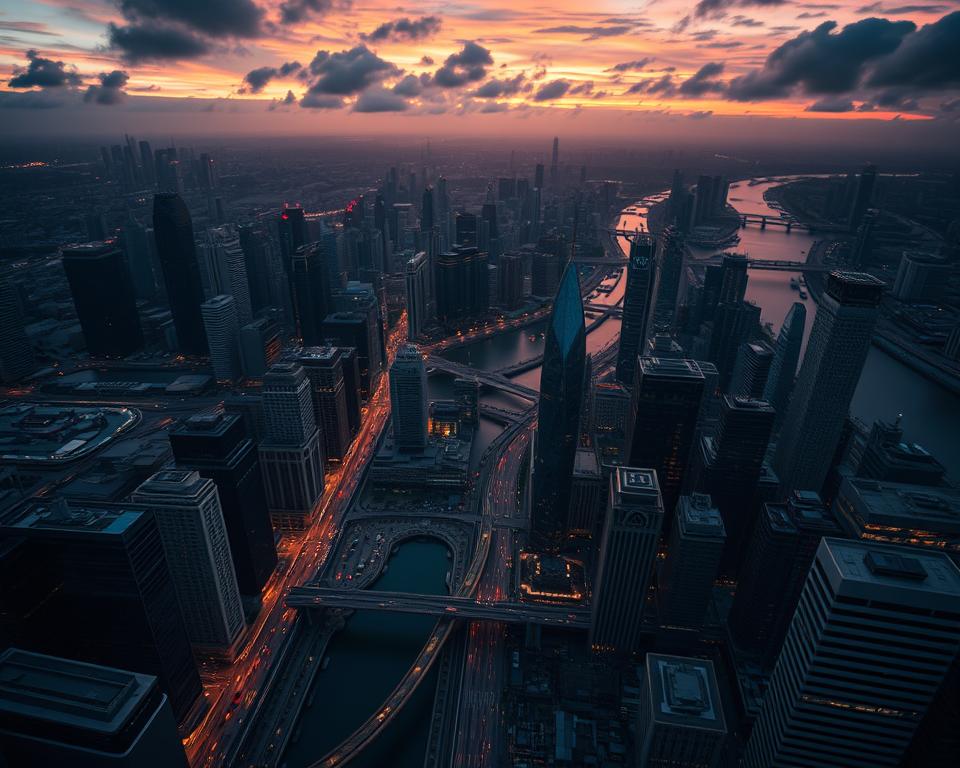
“Drones let us tell stories that feel expansive and alive. They’re not just cameras in the sky—they’re storytellers.”
More and more industries are using drones. Here are some key trends:
- Commercial advertisers use drones for unique product launch shots.
- Nature documentaries use thermal imaging drones to track wildlife.
- Live events get a boost from drone feeds at festivals and sports games.
From small indie films to big blockbusters, teams are adding drones to their work. They focus on both creativity and safety. As costs go down and rules change, drones will keep being a key part of filmmaking.
Integrating Aerial Video Production into Storytelling
Storytellers in the UK are finding out how drone filming changes scenes into something more real. They mix aerial footage with regular shots to make stories more engaging. This way, they pull viewers into the action.
Drones help show a character’s journey over tough landscapes or reveal secret parts of a city. This adds depth to the story.
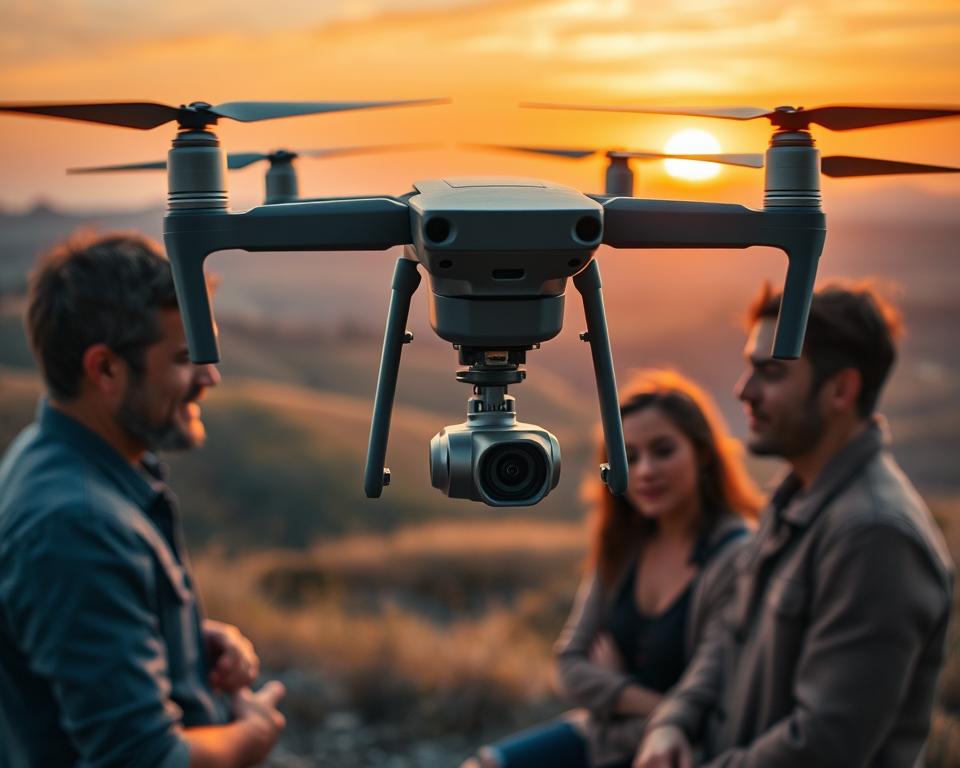
Crafting Dynamic Narratives
Getting it right needs careful planning. First, plan the drone’s path to match the story. For instance, a slow climb can show a character’s emotional peak. Quick movements can show tension.
Matching camera angles between the ground and air shots keeps the story flowing smoothly.
- Use wide aerial shots to set the scene at the start.
- Pair drone close-ups with key dialogue to highlight important moments.
- Try different angles to show changes in the story.
Technical Challenges and Solutions
Keeping the drone steady is a big challenge. Wind can shake the footage, but gimbals like DJI’s Zenmuse series help. Lighting is also tricky, but LED panels like the Sola 1×2 can fix this.
Tools like DaVinci Resolve make it easier to mix drone and handheld shots.
“The key is to let the drone serve the story, not overshadow it,” notes a Royal Television Society guide on modern cinematography.
UK shows like the BBC’s Blue Planet II show how to use drones well. They follow marine life without harming it. Whether for documentaries or dramas, knowing how to use drones can make a big difference.
Legal and Ethical Considerations in Drone Usage
Using drones for aerial video production in the UK means following strict rules. The Civil Aviation Authority (CAA) sets these guidelines. Licensed pilots must keep their drone in sight and avoid no-fly zones to keep everyone safe.
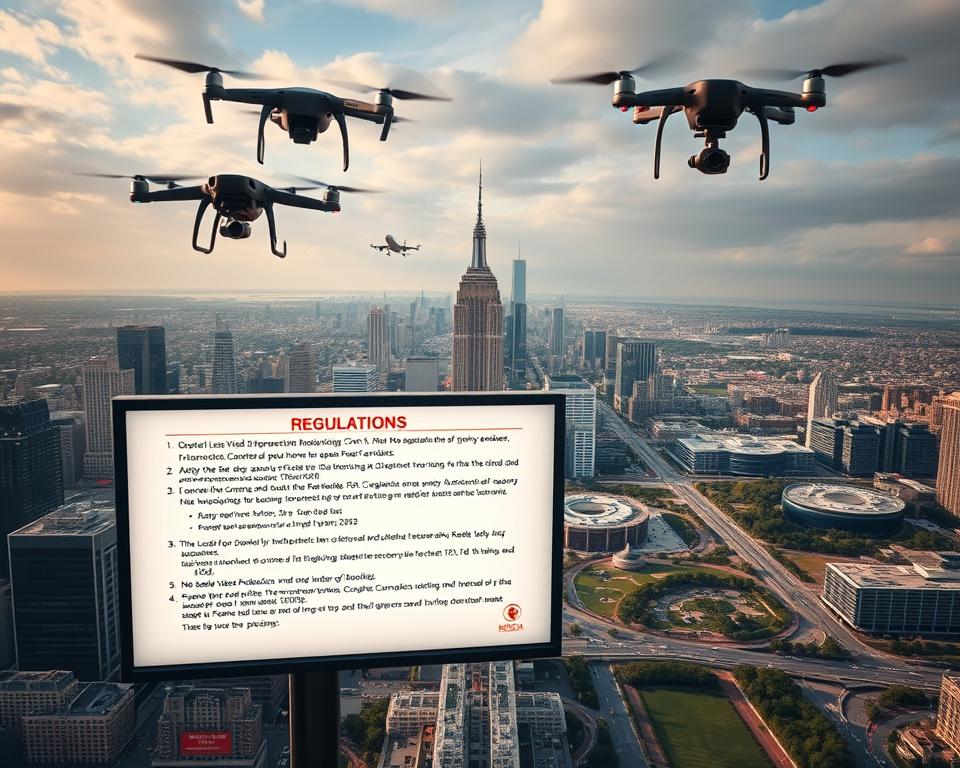
- Licensing: All commercial operators need a CAA permission.
- Flight Zones: Drones should not go above 400ft and must stay away from airports.
- Public Safety: Flying over crowds is not allowed without special permission.
“Responsible drone use protects both communities and the industry’s reputation.” – CAA Aviation Safety Team
Being ethical means respecting people’s privacy when filming near homes. Filmmakers must find a balance between their creativity and the law. This way, they avoid fines or delays in their projects. Training helps crews keep up with new rules. This ensures aerial video production is safe and trusted in the UK.
Economic Impact of Drone Filming in the UK Film Industry
Drone video production is a big deal in the UK’s creative economy. In 2023, investments in drone tech went up by 45%. This change is not just about new tech—it’s changing how and where movies are made.
Investment in Drone Technology
Film studios and indie producers are focusing on drone tech. It helps save money and work faster. Big investments include:
- £12 million for UK drone startups in 2023
- 30% less cost for aerial shots than helicopters
- Partnerships with brands like DJI and Autel Robotics
Boosting Local Film Production
Drone video production is growing film hubs outside London. A 2024 report shows:
| Region | Projects Using Drones | Local Jobs Created |
|---|---|---|
| North West England | 42% | 800+ |
| Scotland | 35% | 500+ |
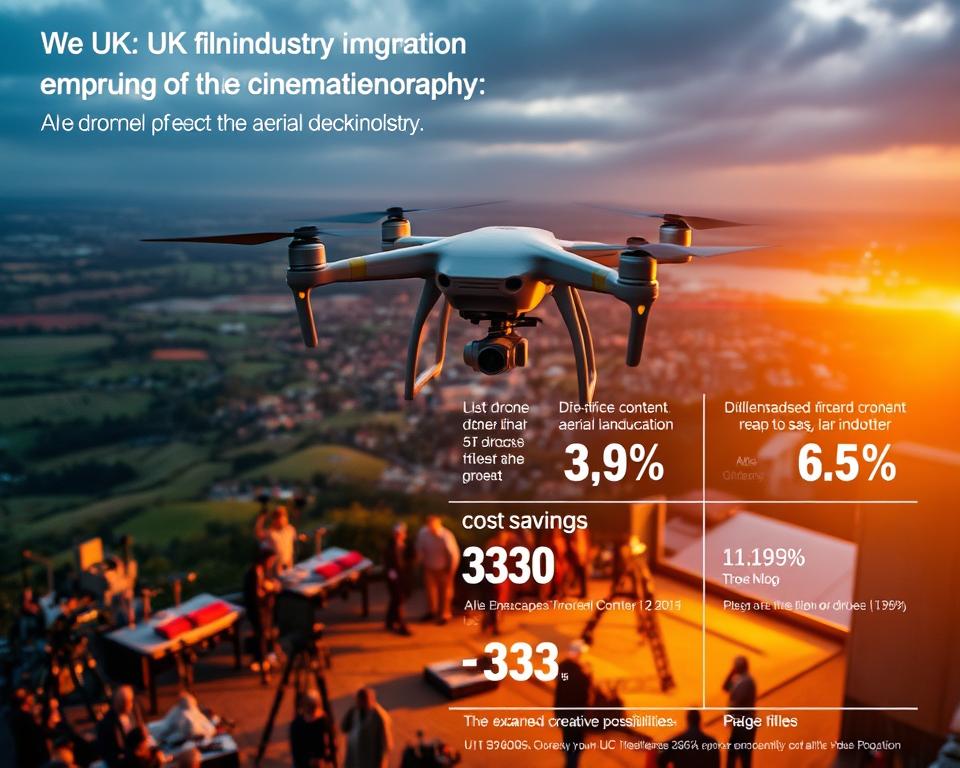
Drone tech is more than a tool—it’s a game-changer. It makes it easier for smaller UK crews to compete worldwide. Movies like “Skyline” and “Coastal Horizons” show how drone tech is bringing in global funding for UK projects.
Training and Certification for Drone Operators
To start a career in aerial filming, you need more than just technical skills. You must get formal training. The Civil Aviation Authority (CAA) has strict rules, so getting certified is essential for commercial operators. These courses teach pilots to mix creativity with safety.
Accredited Training Programmes
The CAA requires operators to finish approved courses. Places like the British Aerial Cinematography Academy and DronePro Training have detailed programs. They cover aviation laws, emergency procedures, and mastering equipment. To get certified, you must pass exams and flight tests.
“Every aerial filming project starts with certified training. It’s the foundation of safe and compliant operations,” states the CAA’s safety advisory.
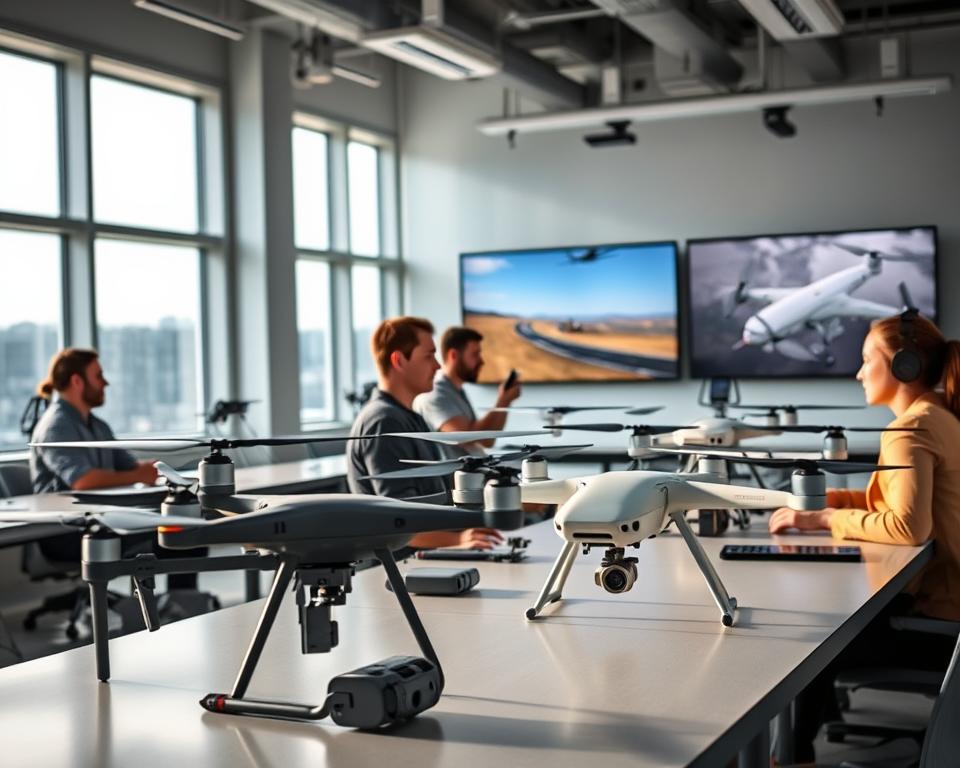
Skills for Professional Drone Services
Good operators have both technical and soft skills. Important skills include:
- Precision flight control and camera operation
- Compliance with airspace regulations
- Post-production editing for cinematic quality
Staying up-to-date with new tech, like AI, is also key. Training providers often work with film schools for practical workshops.
Future Prospects for Aerial Cinematography
UAV cinematography is set to soar to new heights. New tech in artificial intelligence and cameras will change filmmaking. Soon, aerial shots will be quicker and easier to get.
“The future of uav cinematography lies in seamless integration of AI and human creativity,” stated a 2023 industry report by the British Film Commission.
Emerging Trends in UAV Cinematography
| Trend | Description | Example |
|---|---|---|
| AI-Driven Adjustments | Auto-exposure and focus using machine learning | DJI’s Ronin 4D system |
| 8K Resolution | Ultra-high-definition footage capabilities | Autel EVO Nano+ 8K camera |
| Autonomous Flight Paths | Pre-programmed routes for complex shots | Freefly Systems’ Talon drone |
Adapting to Technological Advances
Film crews need to get on board with these new tools. Here’s what to do:
- Invest in AI-assisted editing software
- Learn to analyze data in real-time
- Try out drone and traditional rig combos
These changes will make making movies faster and more creative. Studios like Pinewood and Warner Bros. are leading the way in the UK. The challenge is to keep up with new tech while staying safe.
Conclusion
Drone video production has changed UK filmmaking a lot. It lets us see things from new angles, making scenes feel more real. This change comes from better tech, strict rules, and the skills of drone experts.
Choosing professional drone services means getting top-notch gear and skilled pilots. They help meet safety and creative needs. Training and certifications, like from the Civil Aviation Authority, prepare pilots for complex shoots.
For the UK film industry, using drones is key to staying creative and competitive. They’re great for both small indie films and big productions. With new tech like real-time aerial streaming, working with experts keeps productions ahead, creating amazing films.